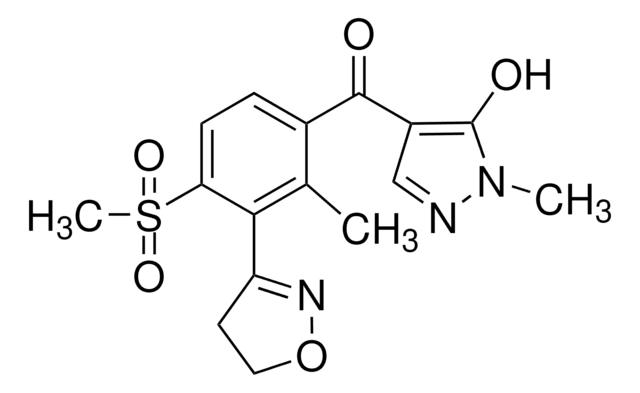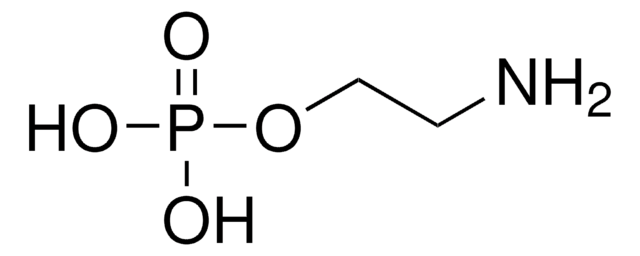Kluczowe dokumenty
32973
Pyrasulfotole
PESTANAL®, analytical standard
Synonim(y):
(5-Hydroxy-1,3-dimethyl-1H-pyrazol-4-yl)[2-(methylsulfonyl)-4-(trifluoromethyl)phenyl]methanone, (5-Hydroxy-1,3-dimethylpyrazol-4-yl)(α,α,α-trifluoro-2-mesyl-p-tolyl)methanone
About This Item
Polecane produkty
klasa czystości
analytical standard
Poziom jakości
linia produktu
PESTANAL®
okres trwałości
limited shelf life, expiry date on the label
metody
HPLC: suitable
gas chromatography (GC): suitable
Zastosowanie
agriculture
environmental
Format
neat
ciąg SMILES
Cc1nn(C)c(O)c1C(=O)c2cc(ccc2S(C)(=O)=O)C(F)(F)F
InChI
1S/C14H13F3N2O4S/c1-7-11(13(21)19(2)18-7)12(20)9-5-4-8(14(15,16)17)6-10(9)24(3,22)23/h4-6,21H,1-3H3
Klucz InChI
DWSPRBSLSXQIEJ-UHFFFAOYSA-N
Szukasz podobnych produktów? Odwiedź Przewodnik dotyczący porównywania produktów
Powiązane kategorie
Opis ogólny
Zastosowanie
- Agricultural products by liquid chromatography-time of flight mass spectrometry (LC-TOF-MS).
- Vegetables and fruits by LC coupled to tandem mass spectrometry (MS/MS).
Polecane produkty
Informacje prawne
Hasło ostrzegawcze
Warning
Zwroty wskazujące rodzaj zagrożenia
Zwroty wskazujące środki ostrożności
Klasyfikacja zagrożeń
Aquatic Acute 1 - Aquatic Chronic 1 - STOT RE 2 Oral
Organy docelowe
Liver,Urinary system,Pancreas
Kod klasy składowania
11 - Combustible Solids
Klasa zagrożenia wodnego (WGK)
WGK 1
Temperatura zapłonu (°F)
Not applicable
Temperatura zapłonu (°C)
Not applicable
Środki ochrony indywidualnej
Eyeshields, Gloves
Wybierz jedną z najnowszych wersji:
Certyfikaty analizy (CoA)
Nie widzisz odpowiedniej wersji?
Jeśli potrzebujesz konkretnej wersji, możesz wyszukać konkretny certyfikat według numeru partii lub serii.
Masz już ten produkt?
Dokumenty związane z niedawno zakupionymi produktami zostały zamieszczone w Bibliotece dokumentów.
Nasz zespół naukowców ma doświadczenie we wszystkich obszarach badań, w tym w naukach przyrodniczych, materiałoznawstwie, syntezie chemicznej, chromatografii, analityce i wielu innych dziedzinach.
Skontaktuj się z zespołem ds. pomocy technicznej










